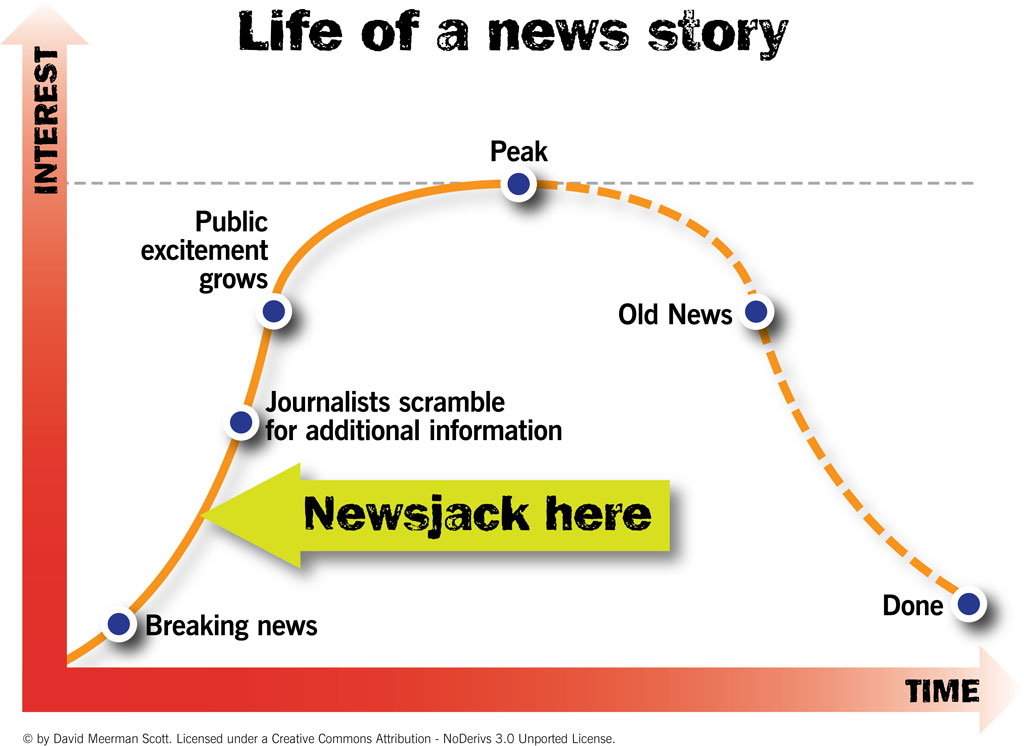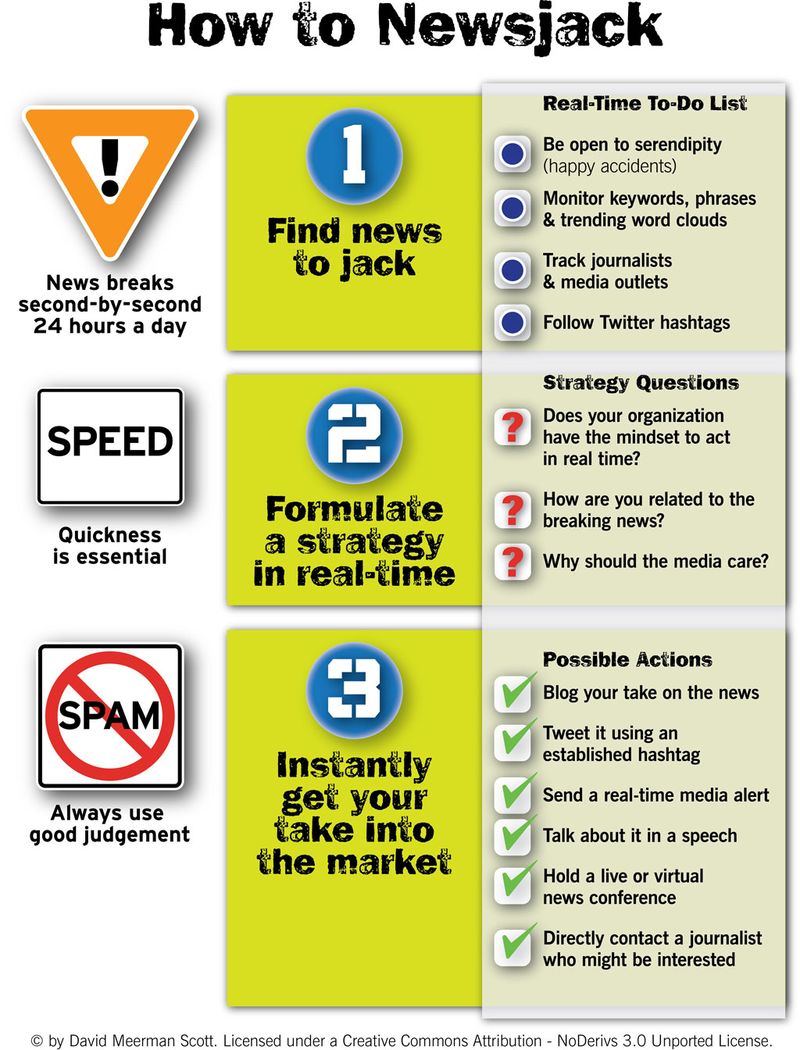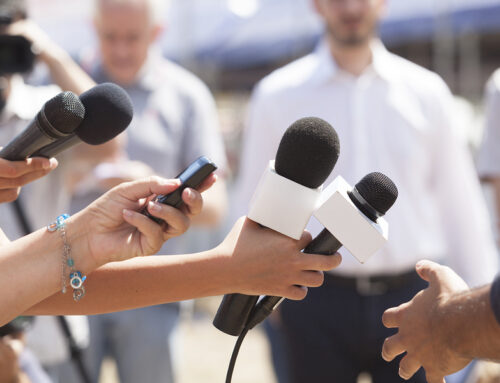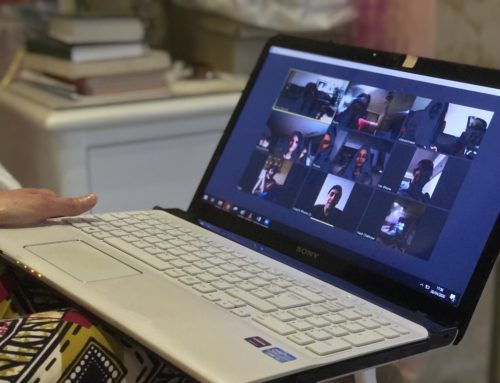Sometimes the work you do is newsworthy on its own and it’s worth the time to pitch your story to reporters.
But there’s also another way to get your name in the news: Newsjacking.
David Meerman Scott has published a fast read all about the process in Newsjacking: How to Inject your Ideas into a Breaking News Story and Generate Tons of Media Coverage (Amazon link).
It’s all about what he calls owning the second paragraph. It works like this: a news story breaks. Journalists are under pressure to update that story for the next edition or broadcast. So while the core of the story (the first paragraph) doesn’t change all that much, the second paragraph does, with additional details or insights or related quotes. That’s your chance to swoop in with something a reporter can use that’s related — but not necessarily essential — to the main story to freshen it up. Then your part of the story gets repeated as other media outlets pick up the story.
In the book, Scott shares an example of newsjacking by the London Fire Brigade that’s a perfect illustration for nonprofits.
Remember when Richard Branson’s private Necker Island retreat went up in flames, and actress Kate Winslet rescued Branson’s 90-year-old mother from the fire?
Here’s how Scott describes the newsjacking:
Within hours of the initial reports on the fire and Winslet’s role in the rescue, the London Fire Brigade offered Winslet the chance to train with firefighters at its training center. The offer was made in a story written by the LFB and posted on its website:
“The Brigade, which has over 300 women firefighters, is inviting Kate to learn how crews deal with fires and also how people can prevent fires from happening in the first place. On the proposed visit, Kate would visit the Brigade’s training centre, meet trainees and experience the role of a modern day firefighter. This would include operational duties such as trying out firefighter breathing apparatus and climbing a ladder pitched against a tower block. She will also be made aware of the community safety activities that firefighting staff regularly carry out.”
The London Fire Brigade newsjacked an incendiary event fueled by A-list celebrity heroism.
Your nonprofit can do the same thing! Think about it . . . celebrities do both amazing and ridiculous things all the time. We also know that at some point in the coming months, there will be a natural disaster of some sort and a presidential candidate will say something really stupid. It’s also likely that a business or another nonprofit (either a sister organization, someone you consider competition, a national counterpart to your local group, etc. ) will go through some sort of crisis or other kind of newsmaking change. These occasions happen over and over; we just don’t know precisely when.
But when something like that does happen, could you follow the London Fire Brigade’s example and offer a training, or a tour, or volunteer hours, or an honorary seat on your board of directors in response? Could that newsworthy event have been prevented if they had downloaded your handbook, or taken your course, or heeded the advice you offer, or lived their lives like your clients do? Remember, these offers don’t necessarily have to be sincere . . . in many cases, humorous or satirical responses can work well too.
To make this work for you, you have to be fast. To practice being nimble, I suggest you make “newsjacking practice” a regular part of your staff meetings. Look at the recent headlines and brainstorm how you could have newsjacked. Then when you get good at that, go for it for real! Here’s the process as outlined by Scott.
Do you have examples of how you’ve newsjacked? I would love to hear them!








